Art Fairs
Puerto Rico’s MECA Art Fair Boosts an Art Scene Valiantly Struggling Amid Hurricane Damage, Debt, and Upheaval
In San Juan, an international roster of dealers came together for a fair that definitely wasn't business-as-usual.
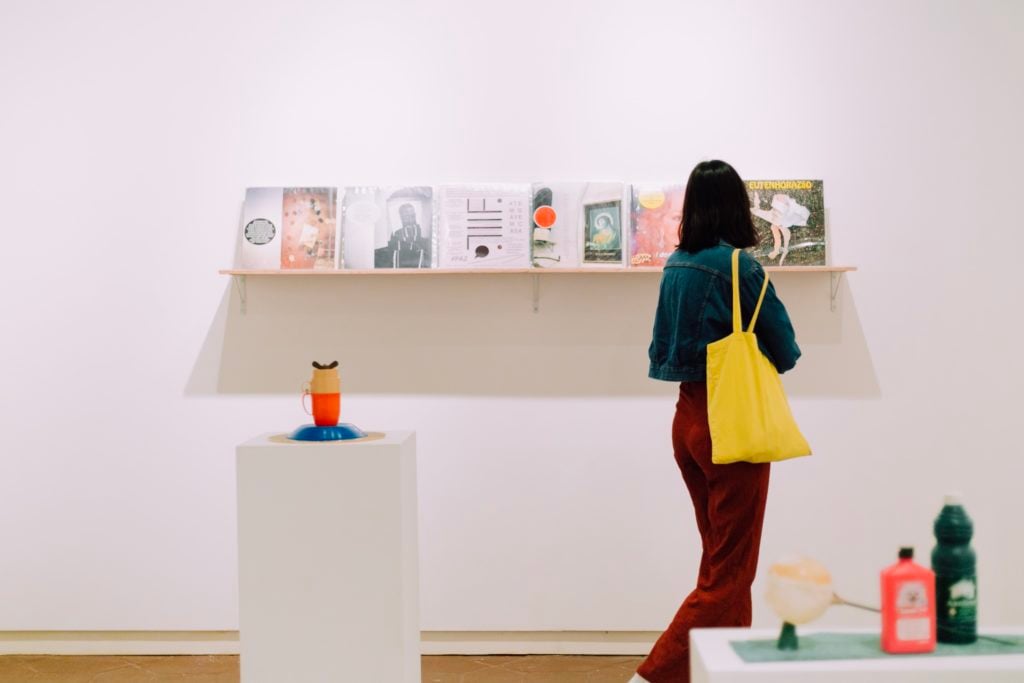
In San Juan, an international roster of dealers came together for a fair that definitely wasn't business-as-usual.

Brian Boucher

Balmy temperatures, low costs, and an underdog vibe brought dealers from as far afield as Tokyo to San Juan, Puerto Rico, for the third edition of the MECA art fair last week. The event comes as the island continues to struggle to recover from the deadly assault of the Category Five Hurricane Maria in 2017, which killed at least as many as three thousand and drove many others away. When it hit, Puerto Rico, a US Territory, was already in a deep financial crisis. Since then came further political upheaval when governor Ricardo Roselló was ousted amid massive protests after his cruel, sexist, and homophobic text exchanges came to light.
Things looked brighter at MECA (named for an abbreviation of Mercado Caribeño, Spanish for Caribbean market), held in a handsome Spanish Colonial-era armory in touristy Old San Juan. With just twenty-five galleries in the main section, the fair was pretty easy to take in, even if you added the excellent “Mecanismos” special section, organized by curators Lizania Cruz, of New York, and Luis Graham Castillo, from the Dominican Republic. MECA draws top galleries, like 47 Canal and Bridget Donahue from New York; Misako & Rosen, of Tokyo; and local greats such as Embajada. It’s also easy on the wallet, with some works in “Mecanismos” going for prices in the low three digits. Since space is limited and the local collecting culture still in development, the founders, Daniel Báez and Tony Rodríguez, suggested that dealers cut on shipping costs by simply bringing works in their luggage, and capping prices at twenty thousand dollars.
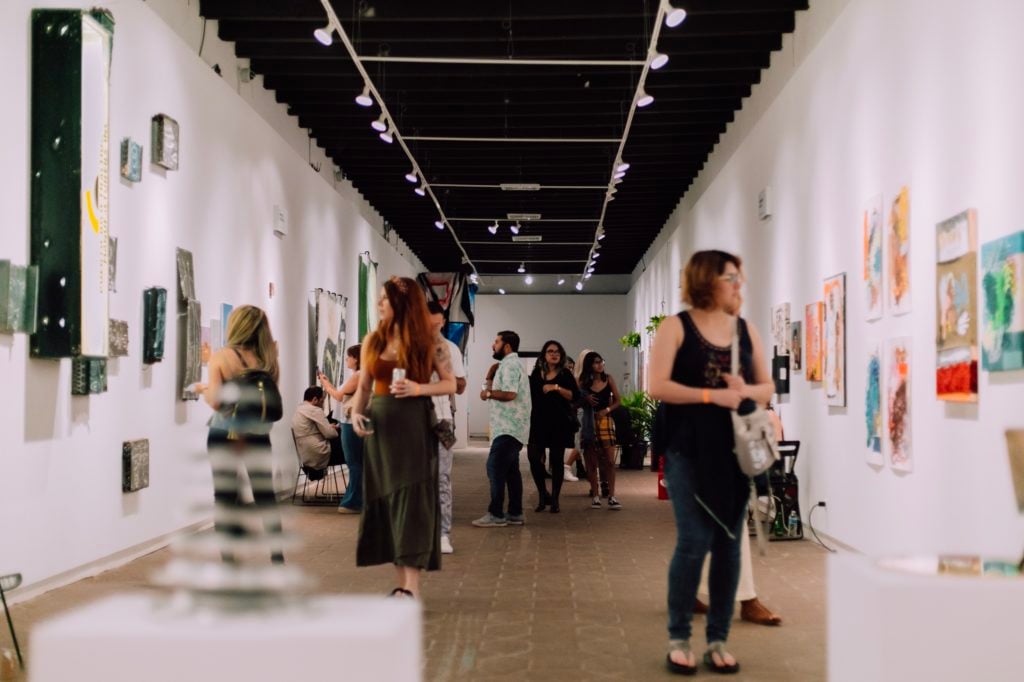
Visitors to the MECA art fair in San Juan. Photo courtesy Discover Puerto Rico.
The fair is meant to fly the flag for the island’s culture overall. “Despite all the craziness we’re going through,” said Báez, who cut his teeth organizing Gavin Brown’s participation in fairs throughout the Spanish-speaking world, where he also recruited dealers (including Brown, naturally) to come to San Juan. “It’s important that people from outside Puerto Rico understand that cultural institutions are still open for business.”
After repairing their own hurricane damage San Juan’s museums, including the Museum of Contemporary Art, pitched in to offer space for artists and local cultural organizations. They relied on support from private foundations and donors, including local hero Lin-Manuel Miranda, who recently announced an initiative with Google to publicize high-resolution photos of the collections of four local museums. While locals gripe that the institutions have been a bit short on support for local practitioners, a couple of San Juan’s art professionals were encouraged by MCA’s new hire of Marina Reyes Franco, whom they characterize as highly plugged in.
“There’s still an economic crisis,” said artist-dealer John Riepenhoff, of Milwaukee’s Green Gallery, “but there’s a cultural surplus.” Riepenhoff feels a kinship with San Juan, coming from a city with its own lively cultural scene far from the major art capitals. Green Gallery brought (in a suitcase) paintings by Tyson Reeder, selling for around five thousand dollars.
Dealers declined to offer specifics on commercial success, which suggests that sales were slow, but they offered the customary optimism, talking about “lots of interest” and “great conversations” with visitors. But with the participation fee at just $3,500, the stakes are relatively low. (Báez was more upbeat, saying that “Lots of exhibitors in the main section expressed satisfaction when it comes to sales” and that they were “very pleased” and looking forward to returning in 2020.)
So, in the face of modest sales, what brings dealers? Ask the New Yorkers, especially, and they’ll typically say, “We love Danny!”, suggesting that Báez is on a year-round charm offensive in New York. (“Galleries do get tired of me inviting them,” he joked.)
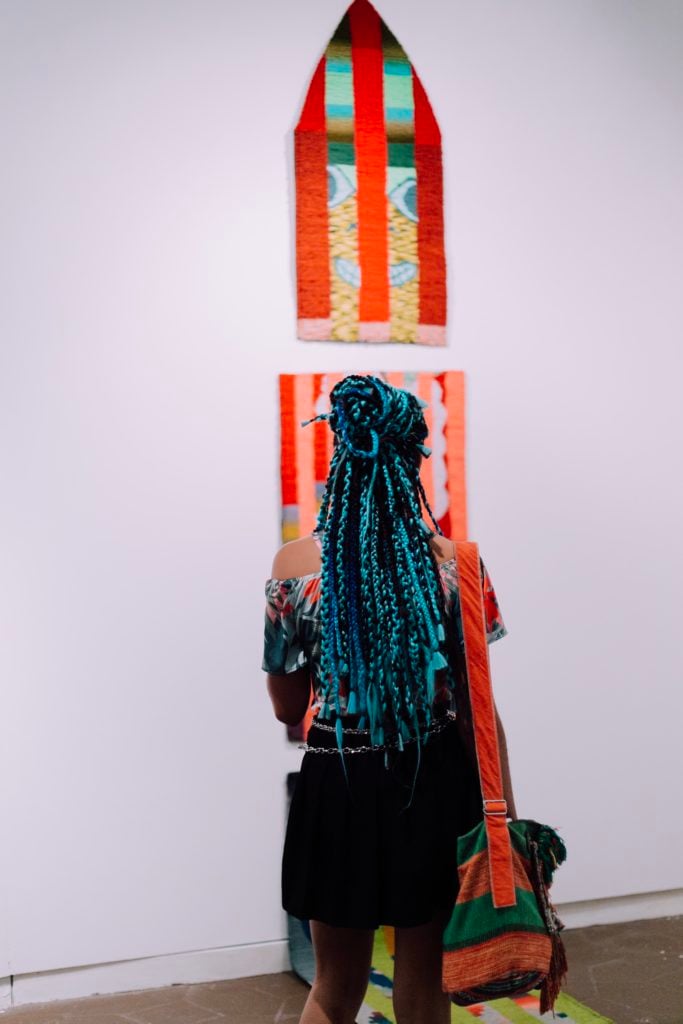
A visitor to Deli Gallery’s booth at the MECA art fair in San Juan. Photo courtesy Discover Puerto Rico.
But those dealers are also in pursuit of the fifteen or so serious Puerto Rican art buyers who support local artists while building international collections. Among them are psychiatrist Cesar Reyes and his wife Mima Benitez, who collect artists such as Laura Owens and Elizabeth Peyton. (Visitors to their hilltop home in the small town of Naguabo were able to spy numerous windmills whose fan blades had been sheared off by Maria’s winds, which climbed to 175 miles per hour.) There’s Diana and Moisés Berezdivin, former clothing retailers whose Espacio 1414, in a former tire warehouse, displays holdings ranging from a 1973 Sam Gilliam shaped canvas to recent works by artists like Kathy Bradford and Mary Weatherford. “It’s a lively scene here,” said Diana Berezdivin, “and we’re trying to help it grow.” Ignacio J. López and Laura M. Guerra are also sought-after local collectors who hosted artists and dealers at a dinner party last weekend.
At the fair, Chicago’s Marianne Ibrahim Gallery brought works by artists Clotilde Jiménez and Florine Démosthène. Both regularly sell out, said gallery partner Pierre Lenhardt, but in order to best support the fair, the gallery would sell only to Puerto Rican collectors or to buyers who came to the fair personally, he said. One collector was at the gallery’s stand one minute into the fair preview, he said, checkbook in hand. Also on the VIP roster were Guggenheim Museum curator at large Pablo León de la Barra; Patrick Charpenel, director of New York’s El Museo del Barrio; art advisor Eve Therond; and artist Alexandra Bell.
San Juan wasn’t such a tough sell for North Little Rock’s Good Weather Gallery, which brought gorgeous works by Ezra Tessler, either. Founder and artist Haynes Riley successfully recruited some of his collectors to come from Colorado and have a little vacation on the island.
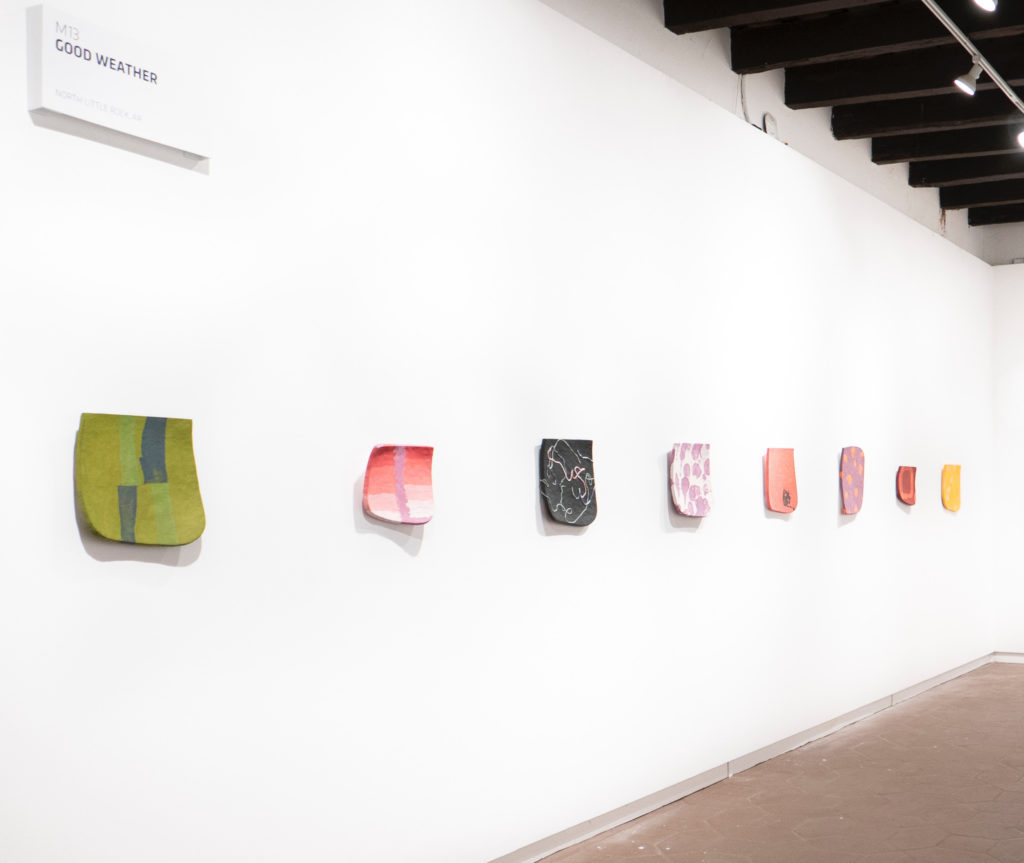
Works by Ezra Tessler, on view at MECA courtesy of Good Weather, North Little Rock, Arkansas.
Indeed, San Juan’s November weather, with temperatures in the eighties, and booming gastronomic scene, along with picturesque beaches and proximity to hikable rainforest, make it an alluring destination. With several museums there to complement the sandy beaches, the fair is a kind of low-key Caribbean warm-up for galleries headed to Art Basel Miami Beach (and its satellite fairs) two weeks later.
Even the visiting dealers apparently found Puerto Rico’s other attractions appealing. MECA is the most relaxed fair they’ve ever done, said some; in fact, one New York dealer reported that her next-door neighbor had been absent much of the first public day. The fair even offered hired hands to cover for dealers who needed a long lunch break, and the armory’s marble floors and timber roofs gave the fair the opposite of the convention center vibe that plagues so many such events. “It’s the Architectural Digest art fair,” joked one dealer’s assistant.
But the political crisis and the storm’s long-lasting aftermath remain ever-present. Puerto Ricans divide time between before Maria, and after. “I’m getting goose bumps just talking about it,” said Tony Rodríguez while showing me around an off-site exhibition of Puerto Rican graphic artists and designers.
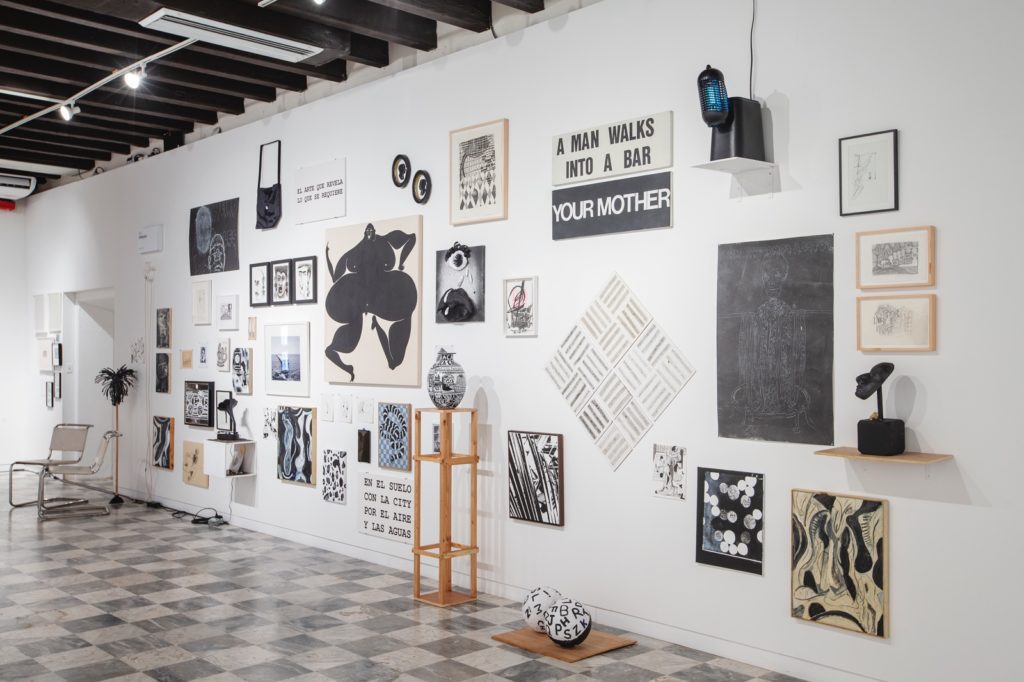
San Juan’s Embajada presents “Blanco y Negro,” at MECA. Photo: Raquel Pérez-Puig.
Federal help is notoriously absent, with FEMA checks coming slowly if at all. Two years on, some areas of the island don’t have power. Anger at the government and over imposed austerity measures runs high; when José B. Carrión III, chairman of the Financial Oversight & Management Board for Puerto Rico, showed up at the fair, he was chased out by protesters, one of whom left the shared booth of two independent spaces, El Lobi and Taller Malaquita, to drive the point home. Almost all of Puerto Rico has been designated as an “opportunity zone,” inviting real estate investors and offering massive tax breaks, which can easily be exploited by the rich at the cost of the poor and middle class.
All the same, the people push on. There’s joy along with the pain. Saturday night saw a MECA-organized concert on the grounds of the armory, with an all-female lineup, headlined by iLe, 2016 Latin Grammy winner (and 2019 nominee), who rocked the crowd of hundreds. One protest-oriented song, she said, was driven by “the hatred in my heart.” Between tunes, she called on the audience to get out and vote and protest and organize. One wonders if Carrión, wherever he was, was able to hear her.